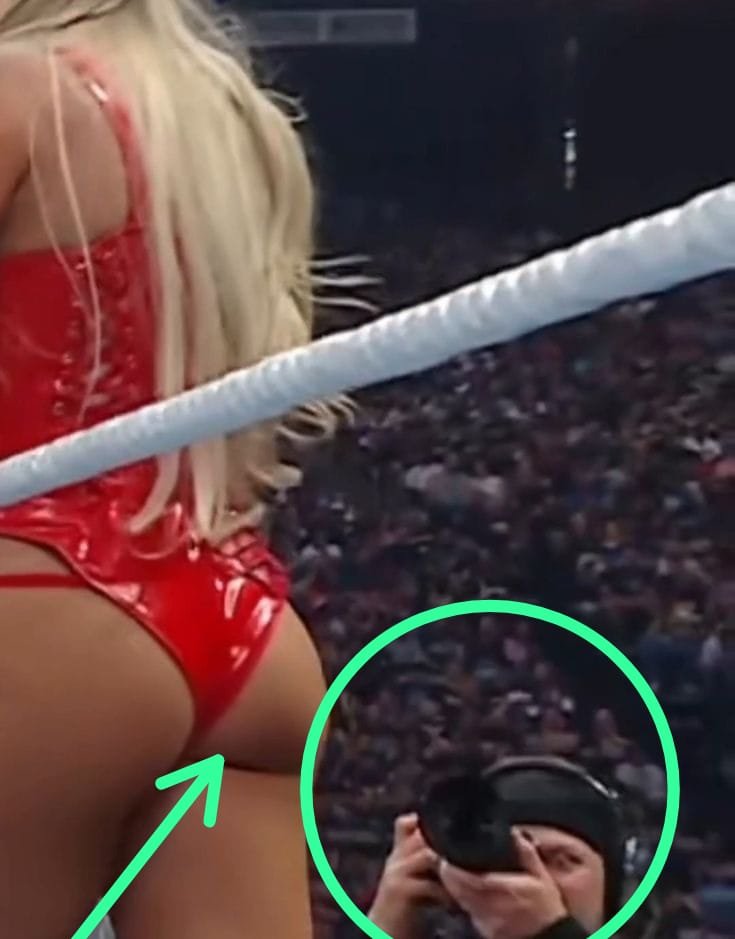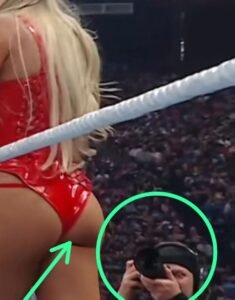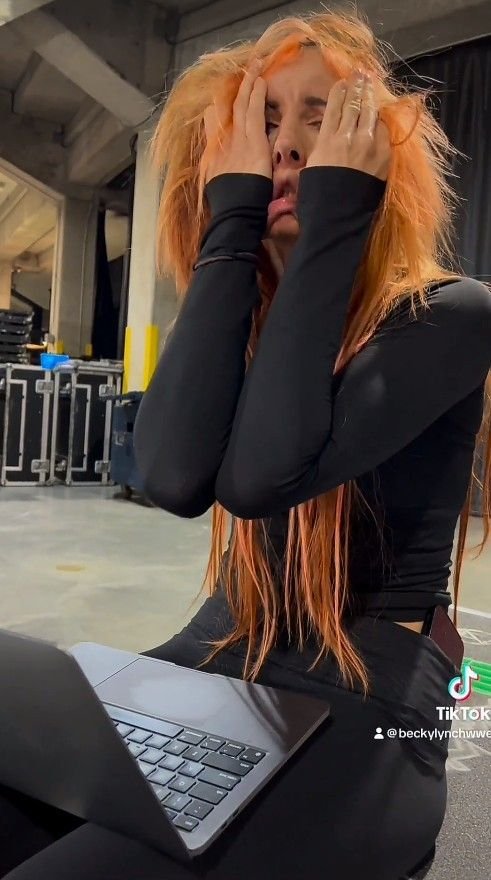
Camera Got Stuck? Liv Morgan’s Hip-Centric WWE Moment Breaks the Internet! Was It Intentional? Inside the Liv Morgan ‘Hip-Gate’ Scandal Rocking WWE
In the high-octane, drama-fueled universe of WWE, moments are manufactured for maximum impact. But sometimes, the most viral incidents aren’t scripted in a writer’s room—they’re born from a spontaneous, unscripted, and utterly captivating flicker of real-life controversy. The wrestling world is currently ablaze, not over a championship win or a brutal betrayal, but over a few seconds of camera work focused intently on Liv Morgan’s hips. Dubbed “Hip-Gate” by fans on social media, the incident has sparked a firestorm of debate, memes, and questions about production, intention, and the very nature of spectacle in sports entertainment.
It happened during this week’s episode of Monday Night Raw. Liv Morgan, the reigning “Liv Morgan Draft” superstar known for her rebellious “Liv Morgan Revolution” persona, was making her signature entrance. As she stood on the ramp, bouncing to her theme music “Liv Forever,” and engaging with the roaring crowd, the primary hard camera—the static shot facing the entrance—appeared to… malfunction. Or did it?
The Incident: A Lingering Lens or a Production Choice?
For a solid five to seven seconds, as Morgan performed her usual hip-swaying dance, the camera remained locked in a tight, unmoving shot squarely on her midsection and hips. There was no pan up to her face, no wide shot to capture the pyro, no cut to the crowd. It was an unusually static and specific focus that immediately stood out to viewers. As soon as the shot finally cut away, the internet exploded.
Social media platforms became a battleground of instant reactions. On one side, thousands of fans cried foul, accusing the WWE production truck of unprofessionalism and blatant objectification. Tweets flooded in with comments like, “Did the camera operator forget how to pan?” and “Wow, way to reduce a top-tier athlete to a body part, WWE.” The hashtag #RespectLivMorgan began trending, with supporters arguing that the shot was disrespectful to Morgan’s athleticism and in-ring accomplishments.
On the other side, a wave of memes and humorous takes emerged. Jokes about the camera operator “being a fan of the revolution” and “appreciating the architecture” went viral. Another faction speculated wildly, suggesting the entire thing was a clever, intentional work by WWE to generate buzz—a modern-day, social-media-savvy version of classic wrestling controversy.
The Question on Everyone’s Lips: Was It Intentional?
This is the core of “Hip-Gate.” The central mystery fueling the scandal: was this a technical glitch, a production error, or a deliberate act?
-
The Case for a Glitch: WWE’s production is renowned for being the slickest in live sports television. Cuts are precise, angles are dynamic. A camera freezing for several seconds is highly unusual. Could it have been a simple technical error—a director’s command that didn’t register, or a stuck joystick on the camera controls? Proponents of this theory argue that if it were intentional, it would be a bizarre and out-of-character risk for a company so protective of its brand image.
-
The Case for a “Work”: Wrestling historians and savvy fans point out that WWE has a long tradition of using subtle, edgy production choices to create talking points. They argue that in an era where social media engagement is currency, a moment like this is pure gold. It costs nothing, gets everyone talking about Raw, and attaches a scandalous aura to Liv Morgan’s character. This theory posits that the controversy is the storyline, blurring the lines between reality and fiction in a way that perfectly suits Morgan’s chaotic, rule-breaking persona.
Liv Morgan’s Response: Fanning the Flames
Typically, in such situations, a company or superstar might issue a statement to clarify or defuse the situation. Liv Morgan, however, is not a typical superstar. True to her character, she has masterfully leaned into the controversy, offering a response that has only intensified the speculation.
On Twitter, she posted a cryptic GIF of a camera lens focusing, accompanied by the winking emoji 😉 and the caption, “The camera knows what it likes. #LivMorganRevolution.” On Instagram, she shared a series of photos from the event, with one particular close-up of the controversial pose captioned, “My hips don’t lie… but did the camera?!”
These posts are classic Liv Morgan: playful, provocative, and refusing to provide a straight answer. By not denying the intentionality and instead embracing the moment, she has effectively taken ownership of the narrative. She’s not a victim of a production error; she’s the star of a controversy, and she’s reveling in it. This has led many to believe that if it wasn’t a planned work initially, it has certainly been adopted as one now.
The Bigger Picture: What “Hip-Gate” Says About WWE Today
“Hip-Gate” is more than just a fleeting viral moment; it’s a microcosm of modern WWE and its relationship with its audience.
-
The Power of Social Media: An incident that a decade ago might have been a fleeting comment among fans is now a global trending topic within minutes. WWE storytelling now extends far beyond the three-hour broadcast, playing out in real-time on Twitter, Instagram, and TikTok.
-
The Blurred Lines of Kayfabe 2.0: In the old days, kayfabe was the strict adherence to portraying storyline as real life. Today, it’s more nuanced. “Hip-Gate” exists in a grey area where fans are invited to debate what is real and what is scripted, making them active participants in the narrative. This engagement is invaluable.
-
The Liv Morgan Persona: This controversy fits Liv Morgan’s character like a glove. Her “revolution” is all about being unapologetically herself, causing chaos, and challenging norms. Being at the center of a scandal about perception and objectification, and then twisting it to her advantage, is perhaps the most “Liv Morgan” thing she could do. It adds a layer of meta-commentary to her character.
Conclusion: Scandal or Masterstroke?
So, where does “Hip-Gate” leave us? Was it a scandalous misstep by WWE production or a calculated masterstroke in viral marketing? The truth may never be fully revealed, and that’s likely the point.
The ultimate outcome is undeniable: Liv Morgan is the most talked-about superstar in WWE today. The incident has generated more mainstream buzz than a standard wrestling angle could have, introducing her name to audiences who don’t regularly watch. By controlling the narrative with her sly social media responses, she has emerged stronger, more intriguing, and more central to the WWE universe than ever.



